 November 30, 2017 John E. Ross, KD8IDJ, Editor
| ||||||
Ballots Counted in 2017 ARRL Director, Vice Director Elections The votes are in, and the ballots have been tallied at ARRL Headquarters in contested Director and Vice Director elections.
In a two-way race to fill the Dakota Division Director's chair being vacated by Kent Olson, KA0LDG, the Division's members elected Vice Director Matt Holden, K0BBC, of Bloomington, Minnesota. Holden received 698 votes, while Dean Summers, N0ND, of Dickinson, North Dakota, got 345 votes. Holden was appointed Vice Director in February 2016 after former Director Greg Widin, K0GW, became ARRL First Vice President. Olson announced earlier this year that he would not seek another term. In a four-way race for the Vice Director's chair that Holden will vacate, the winner was North Dakota Section Manager Lynn Nelson, W0ND, of Minot. Nelson earned 427 votes; Tom Karnauskas, N0UW, of Owatonna, Minnesota, received 338 votes; Chris Stallkamp, KI0D, of Selby, South Dakota got 175 votes; and Jay Maynard, K5ZC, of Fairmont, Minnesota, picked up 93 votes. In the Atlantic Division, ARRL members chose former FCC Special Counsel Riley Hollingsworth, K4ZDH, of Gettysburg, Pennsylvania, as Vice Director. In the final tally, Hollingsworth received 2,559 votes, while Lloyd Roach, K3QNT, of Bedford, Pennsylvania, garnered 1,348 votes.
In the Midwest Division, Director Rod Blocksome, K0DAS, easily held off a re-election challenge from Cecil Miller, WB0RIW, of Wichita, Kansas, 1,249 to 792. Blocksome was elected Midwest Division Vice Director in 2011. In 2014, he was the only candidate to succeed retiring Director Cliff Ahrens, K0CA. Unopposed for new terms were Atlantic Division Director Tom Abernethy, W3TOM; Delta Division Director David Norris, K5UZ; Delta Division Vice Director Ed Hudgens, WB4RHQ; Great Lakes Division Director Dale Williams, WA8EFK; Great Lakes Division Vice Director Tom Delaney, W8WTD, and Midwest Division Vice Director Art Zygielbaum, K0AIZ. All successful candidates begin new 3-year terms on January 1, 2018. Status Report: The Amateur Radio Parity Act of 2017 The Amateur Radio Parity Act of 2017 - S. 1534 is alive, but with legislative action slowed to a glacial pace on Capitol Hill in recent months, there's been no real progress to report since this past summer. At present, the bill is under consideration by the US Senate Committee on Commerce, Science, and Transportation, and it remains an active concern for ARRL. The League is working diligently to shake the bill loose and move it forward.
Introduced on July 12, S. 1534 marked another step forward for the landmark legislation. Senators Roger Wicker (R-MS) and Richard Blumenthal (D-CT) sponsored the bill in the Senate. The US House version of the legislation, HR 555, passed the House of Representatives by unanimous consent last January. FCC Dismisses Radio Amateur's Petition to Revise Call Sign Rules The FCC has dismissed a rule-making petition filed last May by Thomas J. Alessi, K1TA, of Stamford, Connecticut, that sought to amend the Part 97 rules regarding Amateur Radio Service call signs. The Commission action came in a November 28 letter from Scot Stone, Deputy Chief of the FCC Wireless Telecommunications Bureau Mobility Division. Alessi had asked the FCC to make call signs consisting of one letter, followed by two digits, followed by one letter (1 xx 1 format) available to Amateur Extra-class licensees. Alessi asserted that the number of Amateur Extra-class licensees who desire short call signs exceeds the available supply of 1 x 2 and 2 x 1 call signs, and that his plan would make available an additional 7,800 four-character call signs.
"You have not demonstrated any changed circumstances or other reason that would warrant revisiting this decision," Stone's letter concluded. ARRL Board of Directors Publicly Censures Southwestern Division Director Acting on a recommendation of its Ethics and Elections Committee, the ARRL Board of Directors has publicly censured one of its own -- ARRL Southwestern Director Dick Norton, N6AA. On an 11-3 vote, with one member abstaining, the Board adopted a resolution to censure Norton for criticizing the ARRL Code of Conduct for Board members at an Amateur Radio gathering "by virtue of his characterizations thereof, thus criticizing publicly the collective action of the Board of Directors adopting said Code of Conduct and drawing the Board's collective decision making into disrepute." The Board admonished Norton that no further similar behavior would be tolerated.
According to the resolution, fellow Board members had cautioned Norton that "his actions and his manner" in criticizing the Code of Conduct for Board members were "not acceptable and cannot continue, with no notable change in his behavior since that time." Norton had been provided with a copy of the Ethics and Elections Committee resolution, dated September 7, 2017, and responded to it in writing, accompanied by statements of four ARRL members who supported his response. The Board found that Norton's violation of the ARRL Code of Conduct had "caused harm to the League" and provided sufficient cause to publicly censure Norton for "unacceptable behavior as an ARRL Board member." The minutes of the special ARRL Board of Directors meeting have been posted on the ARRL website. The Doctor Will See You Now! "Coaxial Cable vs. Balanced Lines" is the topic of the new (November 9) episode of the "ARRL The Doctor is In" podcast. Listen...and learn! Sponsored by DX Engineering, "ARRL The Doctor is In" is an informative discussion of all things technical. Listen on your computer, tablet, or smartphone -- whenever and wherever you like!
Enjoy "ARRL The Doctor is In" on Apple iTunes, or by using your iPhone or iPad podcast app (just search for "ARRL The Doctor is In"). You can also listen online at Blubrry, or at Stitcher (free registration required, or browse the site as a guest) and through the free Stitcher app for iOS, Kindle, or Android devices. If you've never listened to a podcast before, download our beginner's guide. Just ahead: "Listener Mailbag." Major New Edition of The ARRL Handbook is Now Available! The 2018 edition of The ARRL Handbook for Radio Communications has undergone a complete makeover and is now available. First published in 1926, the most widely used one-stop reference and guide to radio technology principles and practices over the years since has documented the state-of-the-art in Amateur Radio as well as emerging technologies in radio experimentation, discovery, and achievement. The 95th edition of The Handbook has been extensively updated, and includes significant new content. Each chapter has been authored and edited by experts in the subject. ARRL CEO Tom Gallagher, NY2RF, is promoting The Handbook as a valuable resource for new and veteran hams alike.
Readers can download a fully searchable, digital edition of the Handbook, plus expanded supplemental content, software, PC board templates, and other support files. The Handbook is not just for radio amateurs. For years now, it's proved to be a valuable resource for professionals and students in radio and communication technology, electrical engineering, data communication, physics, and geophysics. New projects in the 2018 edition include VHF/UHF/Microwave Filters and Transmission Lines; Software-Controlled and Manual Preselectors for 1.8-30 MHz; Digital Mode Audio-Based VOX/PTT Interface; PICAXE-Based Timer; 6-Meter Halo Antenna; Big Wheel VHF/UHF Mobile Antenna, and an Off-Center End-Fed Portable 40-6 Meter Antenna. Readers of the 2018 edition of The Handbook will also find new and updated information on software-defined radio (SDR) and digital signal processing (DSP), grounding and bonding, Solar Cycle 24-25, tower safety, and remote-control station building. The ARRL Handbook is available in hardcover and softcover editions from the ARRL Store or your ARRL Dealer. Hardcover: ARRL Order No. 0727, ISBN 978-1-62595-072-7, $59.95 retail. Softcover: ARRL Order No. 0710, ISBN 978-1-62595-071-0, $49.95 retail. Call (860) 594-0355 or, toll-free in the US, (888) 277-5289. Sign Up for ARRL's 12 Days of Deals!
ARRL's 12 days of deals concludes Friday, December 15, 2017. Sign up now, and unwrap a new deal every day! AO-91 Commissioned, Declared Open for Amateur Use! AMSAT-NA's latest Amateur Radio CubeSat, RadFxSat (Fox-1B), now known as AO-91, has been opened for general use. AMSAT Engineering officially announced that AO-91 was ready for use at 0650 UTC on Thanksgiving Day, November 23. AMSAT VP of Engineering, Jerry Buxton, N0JY, turned over operation to Mark Hammond, N8MH, and AMSAT Operations during a contact on the AO-91 repeater during the pass over the Eastern US, AMSAT said in a bulletin.
A 1U CubeSat, RadFxSat (Fox-1B) is a joint mission of AMSAT and the Institute for Space and Defense Electronics (ISDE) at Vanderbilt University. AMSAT constructed the rest of the satellite, including the spaceframe, on-board computer, and power system. The Amateur Radio package is similar to that currently on orbit on AO-85, with an uplink on 435.250 MHz (67.0 Hz CTCSS) and a downlink on 145.960 MHz. -- Thanks to AMSAT News Service Amateur Radio-Carrying D-Star One CubeSat among Spacecraft Apparently Lost The first Amateur Radio satellite to employ the D-Star digital voice and data format -- D-Star One -- was among about 20 secondary payloads lost on November 28 after an otherwise nominal launch of a three-stage Soyuz 2.1 booster from the new Vostochny Cosmodrome in the far reaches of eastern Russia.
D-Star One, the first German commercial CubeSat, carried four communication modules, two designated for Amateur Radio use.
"Hopefully, we'll get another chance to utilize D-Star communications with a satellite repeater sometime in the future," Wayne Day, N5WD, commented on the AMSAT-BB. The Fregat upper stage functions as an orbital vehicle in its own right to access a range of orbital configurations through a series of "burns." Made up of six spherical tanks arrayed in a circle, Fregat is "independent from the lower three stages, having its own guidance, navigation, control, tracking, and telemetry systems," according to Gunter's Space Page. The November 28 launch was only the second from the new cosmodrome. IARU Cites Progress Toward 50 MHz Region 1 Allocation The International Amateur Radio Union (IARU) says "significant progress" was made during World Radiocommunication Conference 2019 (WRC-19) preparations that took place earlier this month at International Telecommunication Union (ITU) Headquarters in Geneva. But the IARU cautioned that a lot remains to be done before the "reservations and concerns of regulators and spectrum users are adequately satisfied."
Other key issues affecting the Amateur Service that remain to be addressed prior to WRC-19 include securing protection for Amateur Service primary allocations at 24 GHz and 47 GHz and minimizing possible interference arising from Wireless Power Transmission (WPT) for the charging of electric vehicles. Read more. -- Thanks to the IARU JOTA "Alive and Doing Well," Although 2017 Participation Down from Last Year Nearly 8,000 Scouts got on the air for the 60th Jamboree on the Air (JOTA) over the third weekend in October, National JOTA Coordinator Jim Wilson, K5ND, said. This week, Wilson released the 2017 JOTA report, which declared, "Radio Scouting and Jamboree on the Air are alive and doing well." Facilitating the October JOTA activity were more than 900 radio amateurs at 525 stations.
The tally for JOTA 2017 was 7,872 Scouts on the air, which, Wilson pointed out, was down from the 10,761 who took part in JOTA 2016, but more in line with 2015's participation. Reports were filed by 226 JOTA locations. "The Boy Scouts of America National Radio Scouting Committee will be exploring several improvement projects for 2018," Wilson said. These would include establishing a JOTA Frequency Task Force to explore updated frequency listing and operating recommendations, looking into new ways to alert participants in real time about other JOTA stations that are on the air.
The Radio Scouting Committee's work in 2017 resulted in the introduction of new Radio Merit Badge requirements, which included a new option for Amateur Radio Direction Finding (ARDF) -- or "foxhunting." The panel also developed documents to help Scout leaders incorporate radio and JOTA in their unit activities. Wilson pointed out that the K2BSA operation at the 2017 National Scout Jamboree in July introduced Amateur Radio to nearly 2,500 Scouts, with 305 earning the Radio Merit Badge. Year-Long NASA On The Air Event Kicks off on December 11 The Amateur Radio clubs at National Aeronautics and Space Administration (NASA) centers around the US have invited the Amateur Radio community to join the NASA On The Air (NOTA) special event. NOTA gets under way in December and continues through December 2018. In addition to being the agency's 60th anniversary, 2018 will mark 50 years since NASA orbited the first human around the moon, and 20 years since the first elements of the International Space Station (ISS) were launched into low-Earth orbit.
Starting on Monday, December 11, 2017, Amateur Radio club stations at various NASA centers and facilities will be on the air with special event operations to celebrate these monumental achievements, as well as current milestones. Some clubs will offer commemorative QSL cards, and a special certificate will be available indicating the number of NASA club stations worked on various bands and modes. "We plan to have a web-based system for you to check your points total and download a printable certificate at the end of the event in December 2018," the NASA announcement said. "Points will be awarded for each center worked on each band and mode (phone, CW, digital, and 'space' modes -- satellites, meteor scatter, EME, ISS APRS)." That would, of course, include contacts with any of the Amateur Radio stations on the ISS.
More information is on the NASA On The Air website. Participating Amateur Radio clubs and the NOTA event are independent of -- and not officially sponsored by -- NASA. Read more. -- Thanks to Rob Suggs, KB5EZ, NASA Marshall Space Flight Center Amateur Radio Club (NN4SA), and Kevin Zari, KK4YEL, NASA Kennedy Space Center Amateur Radio Club (N1KSC). Ulrich Rohde, N1UL, Receives Wireless Innovation Forum Leadership Award The oft-honored Ulrich Rohde, N1UL, is the recipient of the Wireless Innovation Forum Leadership Award (formerly International Achievement Award). The award recognizes "especially significant contributions in furthering the global mission of the Wireless Innovation Forum." A prolific technical author, academic, and engineer, Rohde is a partner of Rohde & Schwarz in Munich, Germany, and chairman of Synergy Microwave Corporation, in Paterson, New Jersey.
"Since then, Rohde has actively driven innovation in the field of SDR, both in industry and academia," the Award announcement said. Rohde holds some 50 patents. In December 2016, Rohde was invited to deliver the Sir J.C. Bose Memorial Lecture on "Next-Generation Networks: Software-Defined Radio -- Emerging Trends," at IEEE Hyderabad, India. In the 2017 edition of Communications Receivers, Rohde and his co-authors set SDR at the core of modern communications systems design. A project in which Rohde & Schwarz is involved was also honored. The Wireless Innovation Forum conferred its Technology of the Year award on the German Armed Forces Joint Composite Radio Equipment Project; Rohde & Schwarz is lead industry partner. Winners were announced at the Wireless Innovation Forum Conference on Communications Technologies and Software-Defined Radio (WInnComm 2017), held in San Diego November 15-17. In Brief...
The K7RA Solar Update Tad Cook, K7RA, Seattle, reports: The outlook for the near term shows solar flux at 72, 71, and 69 for November 30-December 2, 68 on December 3-6; 70 and 71 on December 7-8; 72 on December 9-12; 74 on December 13; 75 on December 14-16; 74 on December 17; 73 on December 18-20; 74 on December 21-22; 76 on December 23-29; 72 on December 30-31; 70 on January 1-3; 71 on January 4; 72 on January 5-8; 74 on January 9; 75 on January 10-12, and 74 on January 13.
Sunspot numbers for November 23 through 29, 2017 were 0, 0, 13, 15, 15, 14, and 12, with a mean of 9.9. The 10.7-centimeter flux was 72.4, 74.1, 74.3, 75.5, 73.6, 71.9, and 72.6, with a mean of 73.5. Estimated planetary A indices were 9, 10, 7, 3, 5, 8, and 5, with a mean of 6.7. Estimated mid-latitude A indices were 7, 8, 4, 2, 4, 6, and 4, with a mean of 5. Send me your reports and observations. Getting It Right Ross Primrose, N4RP, took issue with our awkward and ambiguous wording of a sentence in the story "International Grid Chase Will Allow Use of 630 and 2200 Meters" in the November 16 edition of The ARRL Letter. We should have said, "If UTC does not respond within 30 days or does not specifically deny access, these stations may commence operation there." The announcement for the 2017 ARRL 10 Meter Contest, as published in November 2017 QST (p. 94) contains incorrect information. Participants may choose to operate CW, Phone, or Mixed. Stations in the Mixed category may work stations on both modes for contact credit -- i.e., once on CW, and once on phone. Just Ahead in Radiosport
See the ARRL Contest Calendar for more information. For in-depth reporting on Amateur Radio contesting, subscribe to The ARRL Contest Update via your ARRL member profile e-mail preferences. Upcoming ARRL Section, State, and Division Conventions
Find conventions and hamfests in your area.
. .
Subscribe to...
Free of charge to ARRL members...
Find ARRL on Facebook! Follow us on Twitter, Snapchat @ARRLHQ, and Instagram! | ||||||
(1).jpg)

%20Logo(1).png) While it may appear that time is short, S. 1534 does not need to pass the Senate by year's end. The bill remains in play until the current session of Congress adjourns, which doesn't happen until December 31, 2018. Once the bill has been passed by both chambers, the FCC would still have to implement its essence in the Part 97 Amateur Service rules.
While it may appear that time is short, S. 1534 does not need to pass the Senate by year's end. The bill remains in play until the current session of Congress adjourns, which doesn't happen until December 31, 2018. Once the bill has been passed by both chambers, the FCC would still have to implement its essence in the Part 97 Amateur Service rules..jpg) "Approximately fifteen million call signs are presently available in the sequential call sign system, but it does not include every amateur call sign that has been allocated to the United States," Stone wrote in denying Alessi's petition. He also pointed out that the FCC had rejected a similar suggestion in 2010 that would have made certain additional call signs, including 1 xx 1 call signs, available to Amateur Extra-class licensees, but concluded at the time that enough call signs were already available for every Amateur Radio licensee to obtain an acceptable call sign. In addition, the FCC said in 2010 that it had no plans to revisit the issue.
"Approximately fifteen million call signs are presently available in the sequential call sign system, but it does not include every amateur call sign that has been allocated to the United States," Stone wrote in denying Alessi's petition. He also pointed out that the FCC had rejected a similar suggestion in 2010 that would have made certain additional call signs, including 1 xx 1 call signs, available to Amateur Extra-class licensees, but concluded at the time that enough call signs were already available for every Amateur Radio licensee to obtain an acceptable call sign. In addition, the FCC said in 2010 that it had no plans to revisit the issue.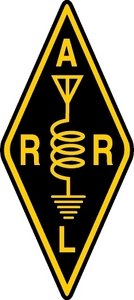 The resolution cited "multiple portions of the Code of Conduct" that Norton was found to have violated. The Board's action related to a complaint filed with the Ethics and Elections Committee by an ARRL member. The Board met in special session by teleconference on November 14 to consider the matter.
The resolution cited "multiple portions of the Code of Conduct" that Norton was found to have violated. The Board's action related to a complaint filed with the Ethics and Elections Committee by an ARRL member. The Board met in special session by teleconference on November 14 to consider the matter.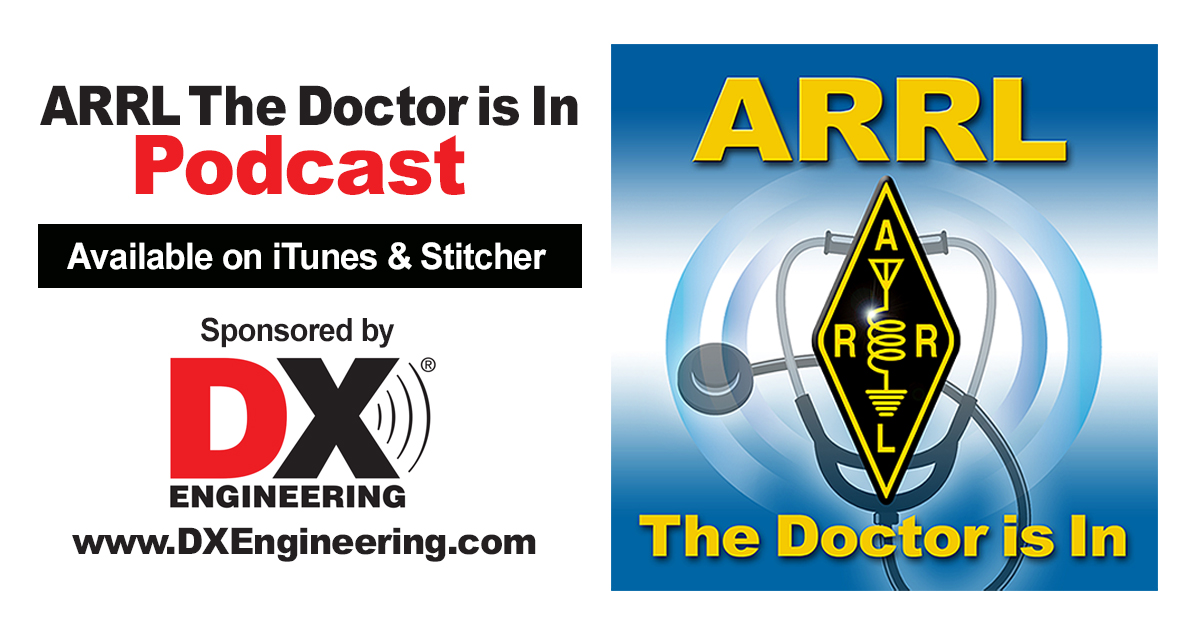 Every 2 weeks, your host, QST Editor-in-Chief Steve Ford, WB8IMY, and the Doctor himself, Joel Hallas, W1ZR, will discuss a broad range of technical topics. You can also e-mail your questions to
Every 2 weeks, your host, QST Editor-in-Chief Steve Ford, WB8IMY, and the Doctor himself, Joel Hallas, W1ZR, will discuss a broad range of technical topics. You can also e-mail your questions to 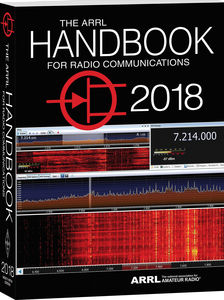 "For new hams, you will be amazed at how quickly you become familiar, not only with the theory, but also with the practical aspects of radio -- from long waves to microwaves," he said. "For experienced hams, you're in for a surprise and delight when you see the extent of the latest revisions. This edition is the most comprehensive revision since the 2014 edition."
"For new hams, you will be amazed at how quickly you become familiar, not only with the theory, but also with the practical aspects of radio -- from long waves to microwaves," he said. "For experienced hams, you're in for a surprise and delight when you see the extent of the latest revisions. This edition is the most comprehensive revision since the 2014 edition." We're making a list and checking it twice. Beginning Monday, December 4, 2017, ARRL will be offering 12 days of deals.
We're making a list and checking it twice. Beginning Monday, December 4, 2017, ARRL will be offering 12 days of deals. 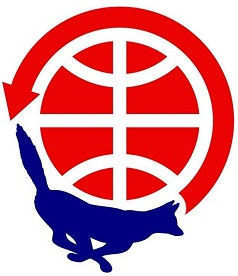 The latest CubeSat in the Fox series was launched on November 18 from Vandenberg Air Force Base in California. Telemetry is downlinked via the DUV sub-audible telemetry stream, which can be decoded using
The latest CubeSat in the Fox series was launched on November 18 from Vandenberg Air Force Base in California. Telemetry is downlinked via the DUV sub-audible telemetry stream, which can be decoded using .jpg) The mission carried the Russian Meteor M2-1 satellite -- the primary payload -- as well as a Canadian Telestar experimental satellite, and 17 other secondary payloads, including D-Star One. According to reports, a fault occurred in the sophisticated and autonomous Fregat upper stage, which, after separating from the launch vehicle, inserts multiple spacecraft into their respective orbits. A so-called "space tug," Fregat has been in service for nearly 2 decades and has suffered three previous failures. Russian space agency Roscosmos is investigating the Fregat failure.
The mission carried the Russian Meteor M2-1 satellite -- the primary payload -- as well as a Canadian Telestar experimental satellite, and 17 other secondary payloads, including D-Star One. According to reports, a fault occurred in the sophisticated and autonomous Fregat upper stage, which, after separating from the launch vehicle, inserts multiple spacecraft into their respective orbits. A so-called "space tug," Fregat has been in service for nearly 2 decades and has suffered three previous failures. Russian space agency Roscosmos is investigating the Fregat failure.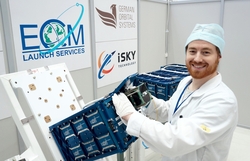
.jpg) For the team representing IARU in Working Party 5A (WP 5A) of ITU Radiocommunication Sector (ITU-R), the main focus was on the WRC-19 agenda item that will consider an Amateur Radio allocation in Region 1 from 50 to 54 MHz that is similar to the one available in Regions 2 and 3. The current, mainly secondary, allocation of 50-52 MHz in most European countries is a regional agreement. Delegates to the meeting considered input documents from IARU, France, the Russian Federation, and Switzerland. A rough consensus was achieved on the text that will provide the technical basis for discussions concerning the access to 50-54 MHz for the Amateur Service in Region 1.
For the team representing IARU in Working Party 5A (WP 5A) of ITU Radiocommunication Sector (ITU-R), the main focus was on the WRC-19 agenda item that will consider an Amateur Radio allocation in Region 1 from 50 to 54 MHz that is similar to the one available in Regions 2 and 3. The current, mainly secondary, allocation of 50-52 MHz in most European countries is a regional agreement. Delegates to the meeting considered input documents from IARU, France, the Russian Federation, and Switzerland. A rough consensus was achieved on the text that will provide the technical basis for discussions concerning the access to 50-54 MHz for the Amateur Service in Region 1.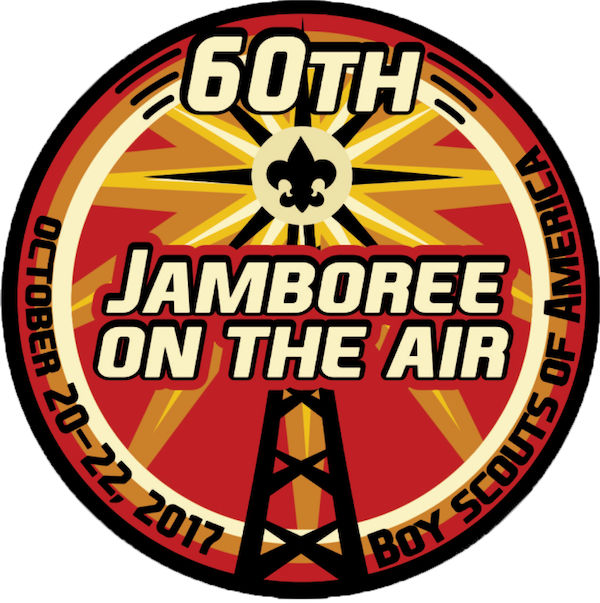 "Propagation wasn't our friend, but, even so, [radio amateurs in] almost 90 countries and all 50 states engaged in conversations with Scouts during the weekend," Wilson said. "In addition to HF, VHF, and UHF, many Amateur Radio digital modes were in use, as well as online Jamboree on the Internet channels."
"Propagation wasn't our friend, but, even so, [radio amateurs in] almost 90 countries and all 50 states engaged in conversations with Scouts during the weekend," Wilson said. "In addition to HF, VHF, and UHF, many Amateur Radio digital modes were in use, as well as online Jamboree on the Internet channels."
.jpg)
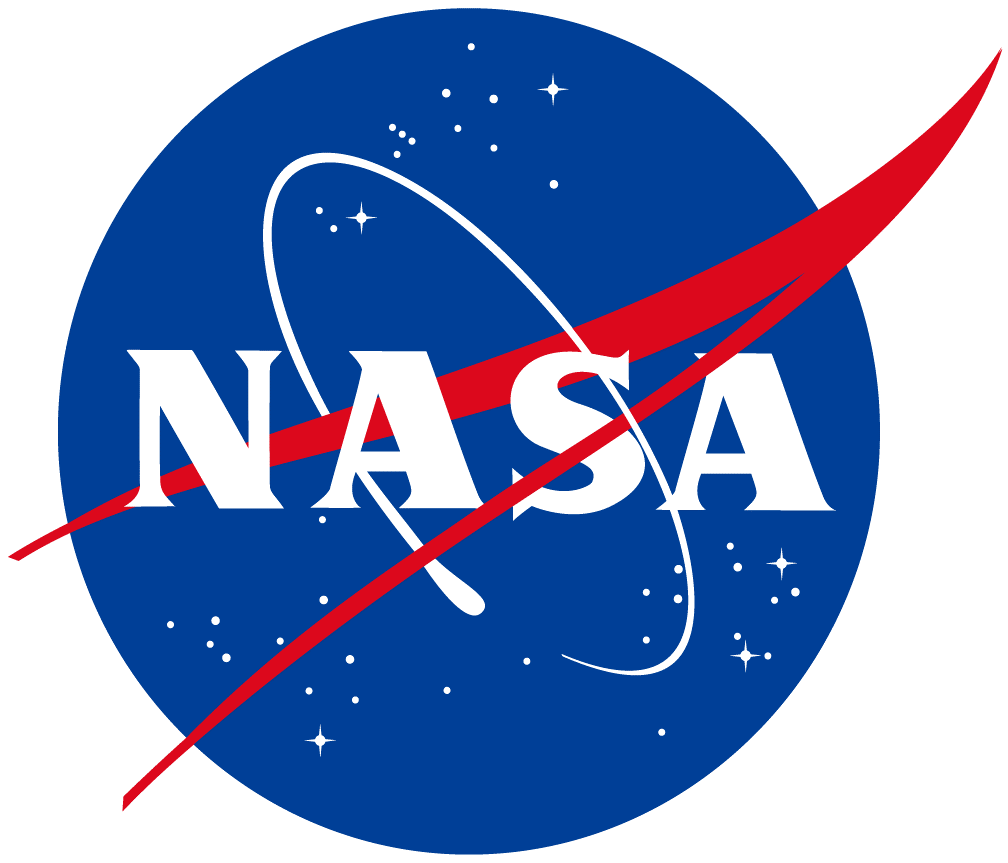 Key anniversaries during NOTA include the 45th anniversary of Apollo 17 on December 11, 2017, which kicks off the event; NASA's founding on July 29, 1958; the 20th anniversary of the ISS first element launch on November 20, 1998; the 20th anniversary of the ISS Node 1 Launch on December 4, 1998, and the 50th anniversary of Apollo 8 -- launched on December 21, 1968, and returned on December 27 -- marking the end of the event.
Key anniversaries during NOTA include the 45th anniversary of Apollo 17 on December 11, 2017, which kicks off the event; NASA's founding on July 29, 1958; the 20th anniversary of the ISS first element launch on November 20, 1998; the 20th anniversary of the ISS Node 1 Launch on December 4, 1998, and the 50th anniversary of Apollo 8 -- launched on December 21, 1968, and returned on December 27 -- marking the end of the event..jpg) While working under an RCA US Department of Defense contract in 1982, Rohde's department developed the first software-defined radio (SDR), which used the COSMAC (complementary symmetry monolithic array computer) chip. Rohde was among the first to present publicly on this topic with his 1985 talk, "Digital HF Radio: A Sampling of Techniques," at the Third International Conference on HF Communication Systems and Techniques in London.
While working under an RCA US Department of Defense contract in 1982, Rohde's department developed the first software-defined radio (SDR), which used the COSMAC (complementary symmetry monolithic array computer) chip. Rohde was among the first to present publicly on this topic with his 1985 talk, "Digital HF Radio: A Sampling of Techniques," at the Third International Conference on HF Communication Systems and Techniques in London. Canada's Polar Prince WSPR beacon will ID with a new call sign on the return leg of its voyage. With the successful completion of the Canada C3 Expedition via the Northwest Passage that culminated with the arrival of the Polar Prince in Victoria, British Columbia, the CG3EXP special event call sign has been retired. The Polar Prince will continue to carry an Ultimate 3 WSPR beacon as the ship returns to the East Coast via the Panama Canal, identifying as VE0EXP. The CG3EXP WSPR beacon transmitted on 20, 30, and 40 meters. Anyone with an HF receiver and the free
Canada's Polar Prince WSPR beacon will ID with a new call sign on the return leg of its voyage. With the successful completion of the Canada C3 Expedition via the Northwest Passage that culminated with the arrival of the Polar Prince in Victoria, British Columbia, the CG3EXP special event call sign has been retired. The Polar Prince will continue to carry an Ultimate 3 WSPR beacon as the ship returns to the East Coast via the Panama Canal, identifying as VE0EXP. The CG3EXP WSPR beacon transmitted on 20, 30, and 40 meters. Anyone with an HF receiver and the free 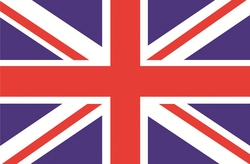 Statistics indicate that the Amateur Radio population in the UK has grown by approximately 10% over the past 5 years. According to telecommunications regulator Ofcom, as of the end of August 2017, there were 52,195 Full licensees, 9,739 Intermediate licensees, and 22,649 Foundation licensees.
Statistics indicate that the Amateur Radio population in the UK has grown by approximately 10% over the past 5 years. According to telecommunications regulator Ofcom, as of the end of August 2017, there were 52,195 Full licensees, 9,739 Intermediate licensees, and 22,649 Foundation licensees.  ARISS
ARISS .gif)
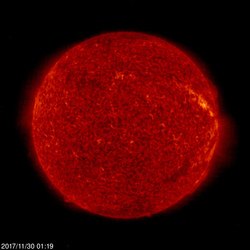 The predicted planetary A index is 10, 6, 5, and 5 on November 30-December 3; 32, 36, 18, 20, and 10 on December 4-8; 5 on December 9-10; 12, 15, 12, and 8 on December 11-14; 5 on December 15-16; 8, 25, and 10 on December 17-19; 8 on December 20-21; 5 on December 22-23; 15 on December 24; 12 on December 25-27; 8 on December 28; 5 on December 29-30; 35, 40, 28, 20, and 10 on December 31-January 4; 5 on January 5-6; 12, 15, 12, 8, and 5 on January 7-11, and 8 on January 12-13.
The predicted planetary A index is 10, 6, 5, and 5 on November 30-December 3; 32, 36, 18, 20, and 10 on December 4-8; 5 on December 9-10; 12, 15, 12, and 8 on December 11-14; 5 on December 15-16; 8, 25, and 10 on December 17-19; 8 on December 20-21; 5 on December 22-23; 15 on December 24; 12 on December 25-27; 8 on December 28; 5 on December 29-30; 35, 40, 28, 20, and 10 on December 31-January 4; 5 on January 5-6; 12, 15, 12, 8, and 5 on January 7-11, and 8 on January 12-13.







